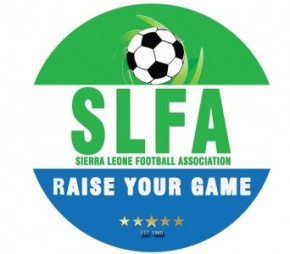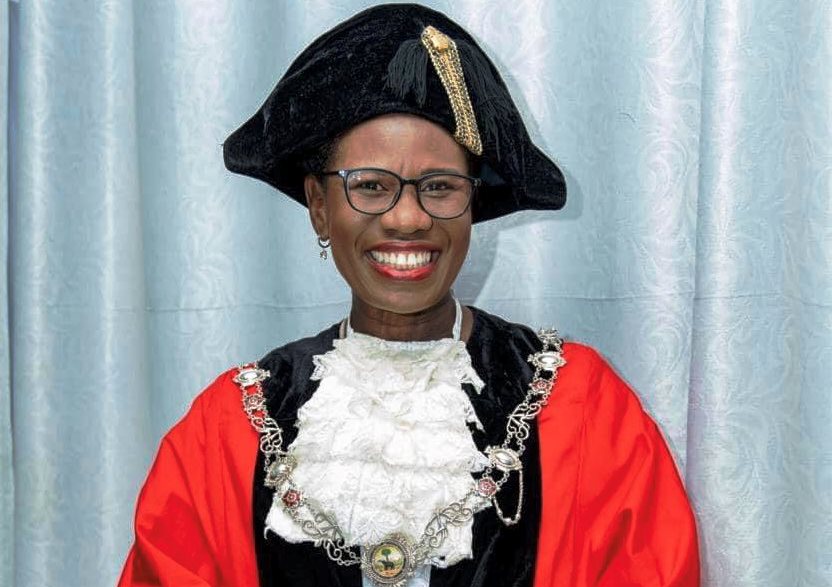By Alusine Fullah
Can Messi and Rolando play well without good football pitch? How can Ibrahim Turay, Amadu Mansaray and Musa Tombo play well when there is no infrastructural development in our national sports? Honestly, impossible!!
Sports infrastructure is considered to be the fundamental, physical, and design unit required to facilitate performing sport activities, and had become one of the important requirements in residential neighborhoods’ centers and a complementary part of infrastructure that aims to serve all community groups. Infrastructural development is the backbone and a prerequisite requirement for sports development. Several empirical researches have established sports as a beneficial activity with positive impacts on the state of health, education and the economy. The United Nations Educational Scientific and Cultural Organization has significantly recommended the importance of infrastructure in sports.
The passion for sports in Sierra Leone particularly in urban settings is unparalleled. While football continues to dominate the field, several other sports like cricket, swimming, and volleyball are also gaining grounds. Sports infrastructure is august to the growth and expansion of sports in Sierra Leone as the country aspires to host sporting events in the future. Meanwhile, realizing the benefits of sports in general, nations like Cameroon, Ghana, Morocco, Senegal, Nigeria, China, United States of America, England, etc have invested heavily in sports infrastructure. For instance, Cameroon as part of her National Fitness Programme started investing in sports infrastructure in 2000. USA has tightly integrated sports infrastructure into her education system by providing athletics with facilities across schools, colleges and universities. This has significantly helped USA to become sporting power. But where is Sierra Leone?!!
As it stands, Sierra Leone does not have a STANDARD FOOTBALL STADIUM. In 2021, the Confederation of African Football (CAF) even placed a ban on the country’s Siaka Stevens Stadium from hosting international matches including the country’s pending Africa Cup of Nations qualifying match against Benin because of poor infrastructure. As a result, this forced the Sierra Leone Government to spend billions of Leones to host Leone Stars’ fixture in Guinea. Sierra Leone is again hosting her 2023 National Cup fixture in Guinea due to the ongoing construction at the Sierra Leone National Stadium.
The issue of CAF/ FIFA placing ban on Sierra Leone for hosting international leagues is not new. If only the memories of Sierra Leoneans can still serve them well, they can still ponder FIFA suspension in 1992 (for one year) due to overcrowding. In consequence, Leone Stars had to use the 28th September Stadium in neighbouring Guinea to play host to Senegal and Togo in qualifiers for the 1994 Africa Cup of Nations. Again, in March 2008, FIFA banned the venue to POOR dressing rooms and sup-standard pitch. What a national DISGRACE on our country!! Thousands of Sierra Leoneans are saying that we should have put good structures in place before this time.
In recent years, it has been acknowledged that the constructions and rehabilitation of sports infrastructure in Sierra Leone can positively stir economic development, whether it involves large or small. Therefore, the development of such sports infrastructure plays a crucial role in the country’s image.
By looks of things, plans are on the table to properly structuralize the infrastructural structures of sports in Sierra Leone. This is evident based on the Sierra Leone Football Association (SLFA) Ordinary Session for 2023.
The Ordinary Congress was held at Radisson Blue on the 5th June, 2023. The meeting was witnessed by, Ibrahim Nyelenkeh, Minister of Sports; Daddy Brima, President of SLFA; Dr. Kenneth Brima, the Executive Director of the National Sports Authority; and Prince Suallay, President of the National Olympic Committee. During this session, several issues were discussed, key among which was the adoption of a new Football Ecosystem that is aimed at reducing the number of teams in the various SLFA leagues to ensure quality, efficiency and proper league management. In his speech, the former Minister of Sports said: “We are here today to put more standards in our football. Within the next three months, we are going to see more improvement…huge funds have been approved…”
In his key note address, the President of SLFA, Daddy Brima highlighted several developmental projects that will soon be implemented by his executive committee. (a) Ensure uniform Maximum number of teams in Division 1 &2 in all regions and districts; (b) Formally launch the female Div.2 league; (c) Reduce the number of teams in the male premier league to 10 by 2024/ 2015 league season; (d) reduce the number of teams in the male premier league to 12 by 2024/2027 league season; (e) Launch a new league to be called National Championship comprising of 10 teams, a league that will abolish playoffs to the Premier League; (f) Launch the National U15 boys’ tournament and work on introducing U12, U14 & U16 in the next two years; (g) Launch the football for schools’ program in collaboration with the Ministry of Sports and Ministry of Education.
Mr. Brima went further to state that his administration has signed a contract of agreed objectives with FIFA. Among those objectives are as following: to reduce and upgrade the current SLFA Headquarters and Technical Center by March 2024 so that it can be used as a match venue for local league matches at various levels (female/ male) and host technical/ administrative capacity-building courses; to construct a new National Technical Center by March 2025; to restructure the SLFA First Women’s Fist Division and Second Division and launch national U14 & U16 girls’ leagues by September 2024; by purchasing one 46-seater bus, two 34-seater buses, one 18-seater passenger van, one sport utility vehicle, and a maximum of 160 motorbikes by the end of 2023, etc.
In a bid to accelerate the growth of football, as the President, he concluded that his administration has also put together several projects. Among those projects: furniture and CCTV installation at the SLFA Secretariat, vehicle project, technical center upgrade, artificial turf project (installation of floodlight in Kenema, repair of the turf in Kono and construction of Premier fence, etc).
The writer believes that Infrastructure plays a key role in achieving excellence in sports. Not only does it help produce sportspersons of repute, it also encourages the youngsters to participate in sports. Lack of infrastructure is a major constraint in the development of sports in Sierra Leone. Although the government has developed a number of outdoor stadiums in some districts, still there is an urgent need for indoor stadiums, particularly in the capital region. The cry for a multipurpose stadium in the capital still remains a distant dream. The demand remains unfulfilled for more than five decades for one reason or another. Moreover, unavailability of land for building sports infrastructure in the capital region is another major obstacle.
The new Minister of Sports, Madam Augusta James Teima (the first woman Sports Minister) of Sierra Leone has a lot to do in her ministerial table. Many Sierra Leoneans (especially football fans) are yearning for more and more improvement in the sports sector.














